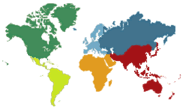This week people around the globe will gather to mark the Third of Tammuz, the 29th anniversary since the passing of the Rebbe, Rabbi Menachem M. Schneerson, of righteous memory, which falls out this year on Wednesday night, June 21 and extends through Thursday, June 22. The Rebbe’s impact has only grown in the past decades, his teachings, example and vision for mankind touching countless men, women and children from Manhattan to Melbourne, Ukraine to Uganda. At gatherings large and small, people who in all likelihood never met the Rebbe or were not even born at the time of his passing in 1994, will reflect on his ongoing influence on their lives, study his voluminous teachings, recall his personal example, and place extra emphasis on performing acts of goodness and kindness.
For Ethan Stein of Manhattan, this 3 Tammuz, or Gimmel Tammuz, will be a particularly meaningful one. In 1984 the Rebbe initiated a project of the daily study of Rambam—Maimonides’ Mishneh Torah—and Stein recently began teaching a daily virtual Rambam class to other business professionals during their lunch hour. “These are people from all walks of life, all backgrounds and upbringings,” Stein, director of strategic partnerships at Escalon Services, told Chabad.org. “Thanks to the Rebbe, we are unified every day to learn Torah and grow together.”
The group will finish the first book of Mishneh Torah on Monday, June 19, and will celebrate a siyum, or completion, at a Gimmel Tammuz event on Wednesday evening at Chabad-Lubavitch of the Upper East Side being held in conjunction with other synagogues in the neighborhood. The program, titled “Lemaan Yilmedu, So They Shall Learn,” will include a special talk by the Chief Ashkenazi Rabbi of Israel, Rabbi David Lau, on the Rebbe’s “passion and call for people to study Torah.”
This being a Hakhel year—a year focused on Jewish unity and gatherings great and small, with an emphasis on rededication to Torah and mitzvot—puts even greater importance on connecting in groups around the yahrtzeit.
“The siyum is a microcosm of this Gimmel Tammuz,” said Stein. “It combines a Hakhel gathering, a special focus on the Rebbe, and the community coming together to celebrate the learning of Torah.”
Then, on Friday night, the Upper East Side community will hold a special 3 Tammuz Shabbaton.
“The Rebbe remains a leader for Klal Yisrael, for all Jews,” said Rabbi Ben Tzion Krasnianski, who heads the Chabad of the Upper East Side. “He continues to guide us and inspire us to live up to our potential, reminding us that there is a Divine essence inside us all.”
The Rebbe assumed leadership of the Chabad-Lubavitch movement in the winter of 1950, just five years after the Holocaust. Building upon the foundation laid by his father-in-law and predecessor the Sixth Rebbe, Rabbi Rabbi Yosef Yitzchak Schneersohn, of righteous memory, the Rebbe would grow the Chabad movement into a global Jewish powerhouse, engineer a worldwide Jewish renaissance, and bring Judaism’s message and vision for all humanity to the fore.
The Rebbe expended thousands of hours meeting and corresponding with people from all walks of life, among them rabbis, statesmen and laypeople, Jews and non-Jews. In the estimated 11,000 hours that the Rebbe spent teaching at public gatherings, he would expound on a diverse range of topics, from in-depth analysis of Talmudic passages to the profound elucidation of esoteric parts of Torah, to pressing societal matters. To date, hundreds of volumes of the Rebbe’s teachings have already been published, with still more to come.
Twenty-nine years after his passing, the Rebbe’s moral and ethical teachings for the world continue to serve as a guiding force for a generation of Jews and non-Jews seeking to change the world for the better.

Events Around the World
Events related to 3 Tammuz will take place around the world with Jews from different walks of life gathering to internalize the Rebbe’s teachings in different ways. In Jerusalem, an event sponsored by Chabad of Rechavia will focus on the Rebbe’s approach to science and technology, with talks by Ariel Gomez, a systems specialist on the Beresheet project, Israel’s first lunar landing, and Michael Allouche, an award-winning aviation and drone technology expert. Meanwhile, the Chabad Women’s Circle of Talbiya-Mamila will be hosting an event for women at Meshkenot Sha’ananim Cultural and Conference Center, featuring a talk by writer and editor Shaindy Jacobson and the singing of Chabad niggunim led by Nirit Holotlevy.
In Redondo Beach, Calif., organizers are expecting 150 people at a 3 Tammuz-related Shabbat at the Jewish Community Center of the South Bay, where Jewish rapper Ari Lesser will deliver a lyrical sermon after leading a traditional Kabbalat Shabbat prayer service.
“Ari shares inspirational messages and Torah lessons based on the Rebbe’s teachings through rhyme, which is a creative and effective way to reach and inspire people here,” said Rabbi Zalman Gordon of Chabad of the Beach Cities in Redondo, about 20 miles south of Los Angeles “Everyone in our community has been impacted by the Rebbe because our Chabad center, like every Chabad center, was started with the Rebbe’s inspiration, and all our programs are inspired by the Rebbe’s message.
Providing some spiritual and emotional relief from the travails of war, 3 Tammuz events will be taking place throughout Ukraine. “Now more than ever, every opportunity we have, every Jewish holiday, any occasion when we can get everybody together and inspire them, we take advantage of,” said Miriam Moskovitz, co-director of Chabad of Kharkov with her husband, Rabbi Moshe Moskovitz. “We will have a big Gimmel Tammuz farbrengen and program in Kharkov’s Choral Synagogue on Thursday night for men, women and children.”
In addition to in-person events, there is an abundance of inspirational and informational material in Chabad.org’s 3 Tammuz section. Topics include: essays, personal reflections and stories written by people whose lives the Rebbe touched; six simple suggestions for what to do on the anniversary of the Rebbe’s passing; customs for the Rebbe’s yahrtzeit, based on a letter he wrote before the Sixth Rebbe’s first yahrtzeit; guidance on sending a prayer petition; learning the last Chassidic discourse distributed by the Rebbe; videos of the Rebbe; and more.

50,000 Visitors Expected at Rebbe’s Resting Place
Throughout the week, upwards of 50,000 people are expected to visit the Ohel, the Rebbe’s resting place at the Old Montefiore Cemetery in Queens, N.Y. For more than seven decades—since the passing of the Rebbe’s father-in-law—the small open-air structure has been a place where Jews from all walks of life pour their hearts out in prayer and to beseech G‑d, invoking the merit of the holy tzaddikim who rest there. Upon the Rebbe’s passing, more people than ever began to gather there, especially on significant days, such as his yahrtzeit. In recent years, the Ohel Chabad-Lubavitch Visitor Center has been expanded to handle the great influx of visitors who visit. There is space to study Torah, pray, write a petition note to be read and place at the Ohel, and hold farbrengen gatherings.
In addition to the 50,000 who will visit in person, many around the world will send in their personal prayer petitions by email to be delivered to the Ohel. Staff print thousands of papers and tear them—to protect the petitioner’s privacy—before placing them at the Ohel, where they join a massive mound of papers. Periodically, staff collect the papers and burn them, as per the Rebbe’s instructions.

Transformative Visits to the Ohel
Over the years, countless individuals’ lives have been transformed during their visits to the Ohel. For instance, Andrea Herzog of Baltimore helps women, Jewish and non-Jewish, who want to cover their hair for religious, medical or other reasons. One year the finances of her business, called Wrapunzel, had become strained to the breaking point.
“We were spending so much more than we were making,” said Herzog. “I wasn’t sure if I should just quit the whole thing. I was just really, really at a loss about what to do about work.” Though not particularly connected to Chabad at the time, Herzog made a “very impulsive” decision to go to the Ohel and write a letter for a blessing from above. When she walked into the entryway, a video of the Rebbe was playing on a monitor.
“The Rebbe was talking about the importance of our relationship with non-Jews and what our job as Jews is to unite the world,” said Herzog. “The Rebbe urged everyone to be a kiddush Hashem—to sanctify G‑d’s name in public—and not be insular, and how important it is to bring what we have to offer to the whole world and not keep it hidden,” she said. “That is exactly what I wanted to do with my work.”
Hearing that message, said Herzog, bolstered both her drive and perseverance: “It put me back on the right track and has reminded me every day of why I’m doing what I’m doing. The Rebbe has given me so much clarity.”
To find a 3 Tammuz event near you, visit the Chabad center locator here.









Join the Discussion